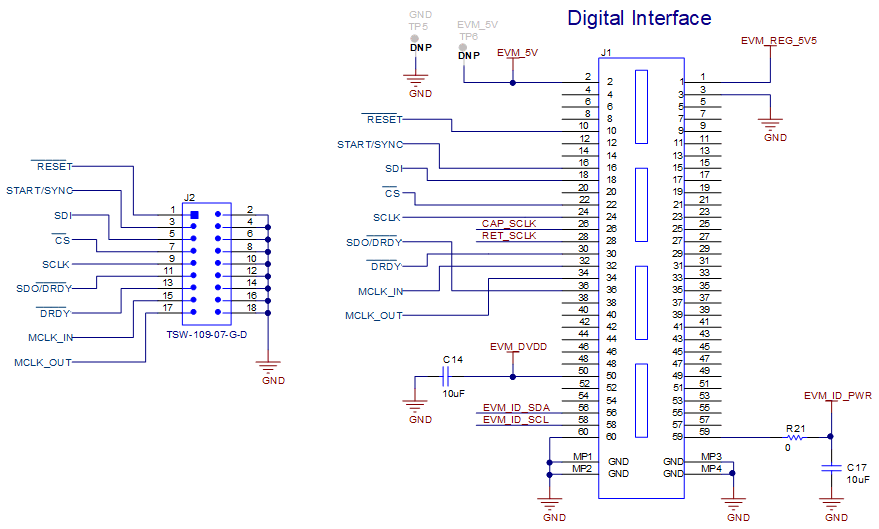SBAU351 April 2021
3.1 Serial Interface (SPI)
The ADS127L11 ADC uses SPI serial communication in mode 1 (CPOL = 0, CPHA = 1). Because the serial clock (SCLK) frequency can be as fast as 40 MHz, the ADS127L11 EVM offers 10-Ω resistors between the SPI signals to aid with signal integrity. Typically, in high-speed SPI communication, fast signal edges can cause overshoot; these 10-Ω resistors slow down the signal edges in order to minimize signal overshoot. J2 provides test points to measure the digital signals.
 Figure 3-1 Connection to Digital Signals on PHI and Test Points
Figure 3-1 Connection to Digital Signals on PHI and Test Points